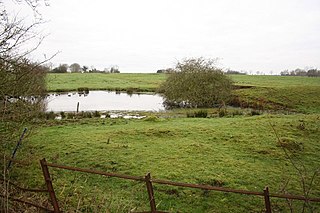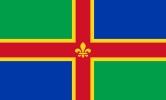Related Research Articles

The Order of Canons Regular of Prémontré, also known as the Premonstratensians, the Norbertines and, in Britain and Ireland, as the White Canons, is a religious order of canons regular of the Catholic Church founded in Prémontré near Laon in 1120 by Norbert of Xanten, who later became Archbishop of Magdeburg. Premonstratensians are designated by OPraem following their name.

Beeleigh Abbey near Maldon in Essex, England, was a monastery constructed in 1180 for the Order of Canons Regular of Prémontré, as known as the Norbertines or Premonstratensians. The order linked the change of the separate life of monks in the 12th century with the retrospective life of the friar, who was considerably more active.

Leiston Abbey outside the town of Leiston, Suffolk, England, was a religious house of Canons Regular following the Premonstratensian rule, dedicated to St Mary. Founded in c. 1183 by Ranulf de Glanville, Chief Justiciar to King Henry II (1180-1189), it was originally built on a marshland isle near the sea, and was called "St Mary de Insula". Around 1363 the abbey suffered so much from flooding that a new site was chosen and it was rebuilt further inland for its patron, Robert de Ufford, 1st Earl of Suffolk (1298-1369). However, there was a great fire in c. 1379 and further rebuilding was necessary.

Barlings Abbey was a one of nine Premonstratensian monasteries in the historical county of Lincolnshire, England. It was founded in 1154, as a daughter house of the Abbey of St. Mary and St. Martial in Newsham.

Tupholme Abbey was a Premonstratensian abbey close to the River Witham some 10.5 miles (16.9 km) east of the city of Lincoln, England and one of nine such abbeys within the historical county. The Witham valley in Lincolnshire is notable for its high concentration of monasteries—there were six on the east bank and three on the west—all presumably drawn to the area by the usefulness of the River Witham for transport and by the wealth that it transported. The abbey was largely destroyed by 1538, after being seized during Henry VIII's Dissolution of the Monasteries.

Bonby Priory was a priory in Lincolnshire, England. St. Andrews Church is all that remains of Bonby Priory, which was a Benedictine alien priory of St. Fromond Priory from 1199 to 1403. The priory was then rented to Beauvale Abbey and the church became parochial.
Covenham Priory was a priory in Covenham St Bartholomew, Lincolnshire, England.
Great Limber Priory, Limber Magna was a priory in Great Limber, Lincolnshire, England.
Great Limber Preceptory, Limber Magna was a Camera (farm) of the Knights Templar and later the Knights Hospitaller in the village of Great Limber, Lincolnshire, England.
Haugham Priory was a Benedictine priory in Lincolnshire, England.
Long Bennington Priory was a priory in Lincolnshire, England.

Minting Priory was a priory in Minting, Lincolnshire, England.
North Hykeham Priory was a priory in Lincolnshire, England.
Orford Priory was a priory of Premonstratensian canonesses in Stainton le Vale, Lincolnshire, England, and one of nine within the historical county.
Hagnaby Abbey was an abbey and former priory in Hagnaby, Lincolnshire, England. It was one of nine Premonstratensian houses within the historical county.
Humberston Abbey was an abbey in Humberston, Lincolnshire, England.

Newsham Abbey was an abbey in Newsham, a small hamlet north of Brocklesby village in Lincolnshire, England, and one of nine within the historical county. Founded by Peter of Gousla in 1143, Newsham was a daughter house of the Abbey of Licques, near Calais, and the first Premonstratensian house established in England.
Everdon Priory was a priory in Northamptonshire, England. The village of Everdon is located about 6 km south-east of the town of Daventry.
References
- ↑ "Cammeringham Priory". Alien Houses. Victoria County History. Retrieved 3 August 2011.
- ↑ Historic England. "Cammeringham Priory (326933)". Research records (formerly PastScape). Retrieved 3 August 2011.
53°19′40″N0°34′38″W / 53.327778°N 0.577310°W

